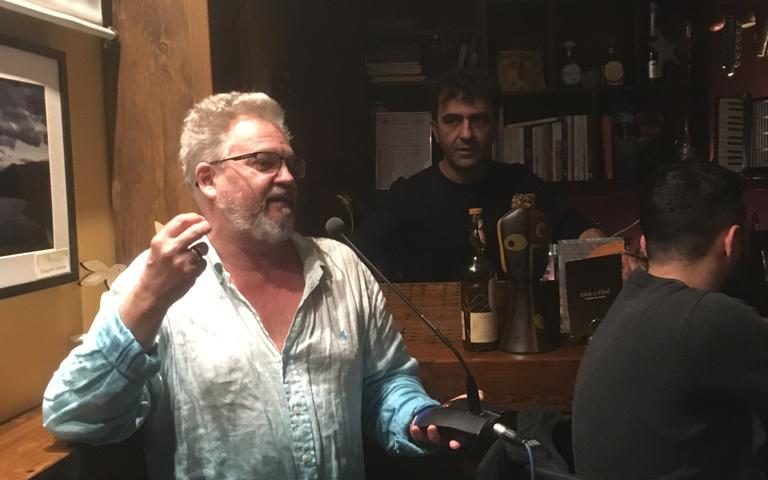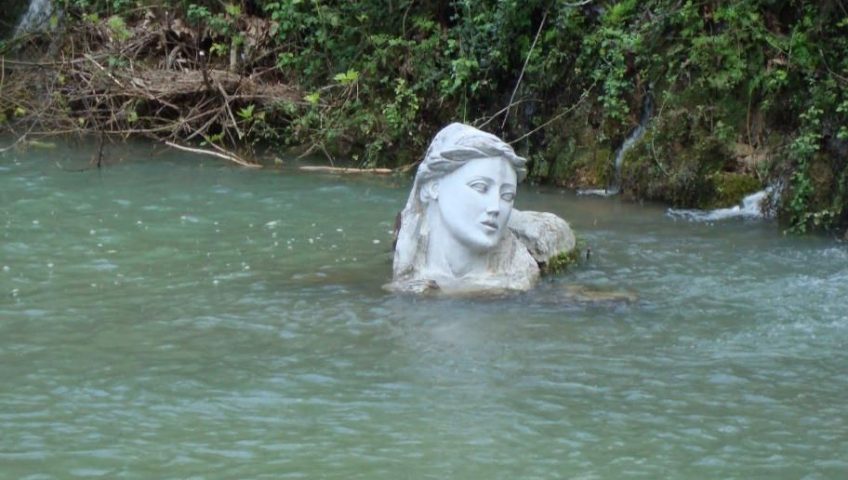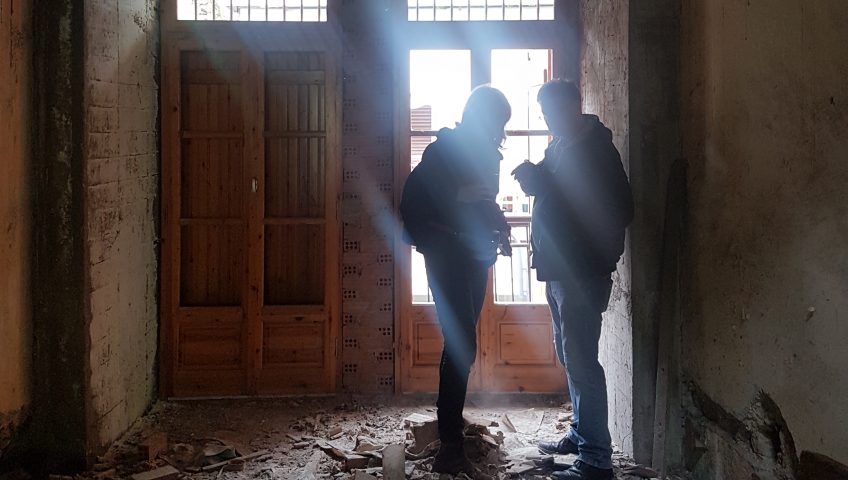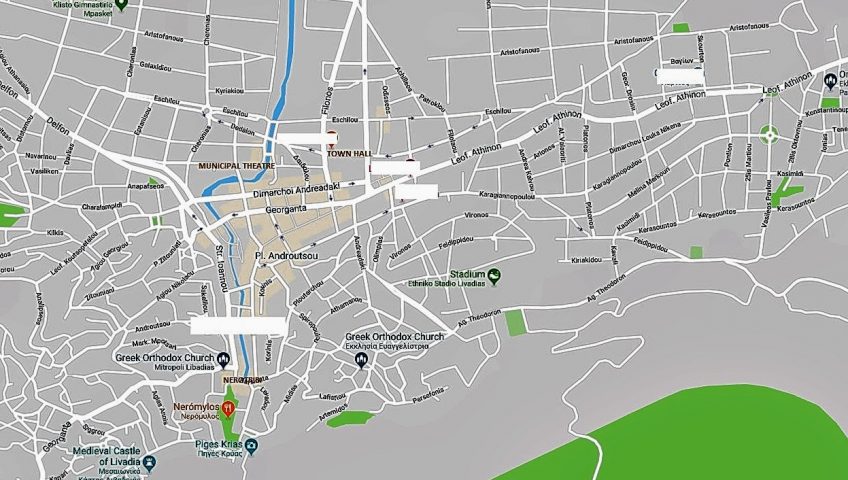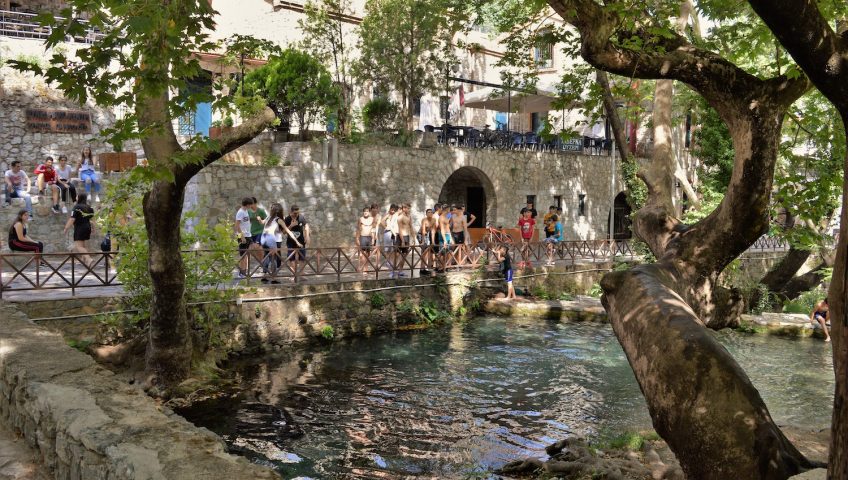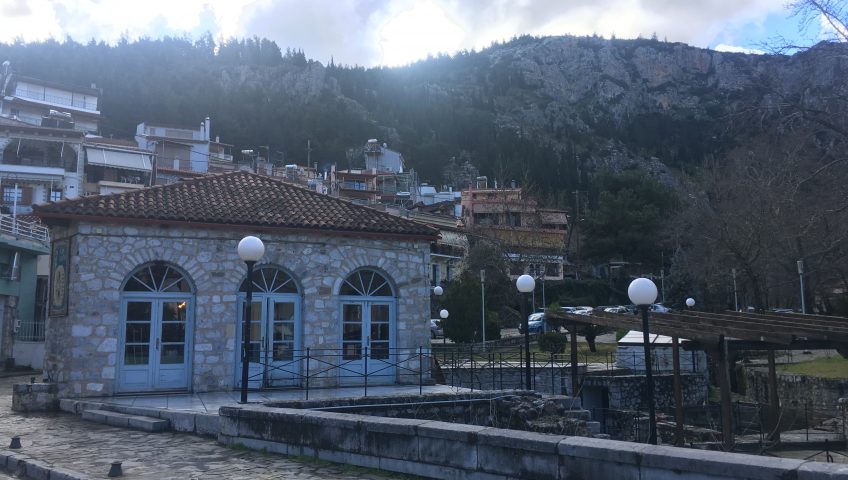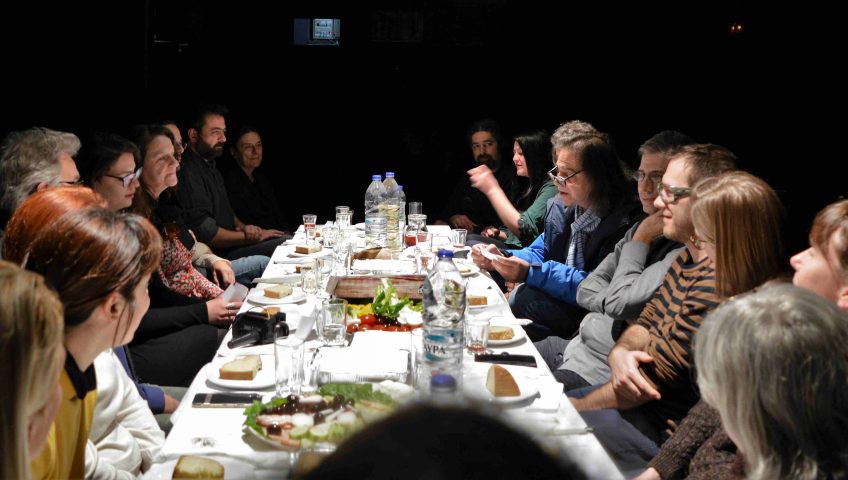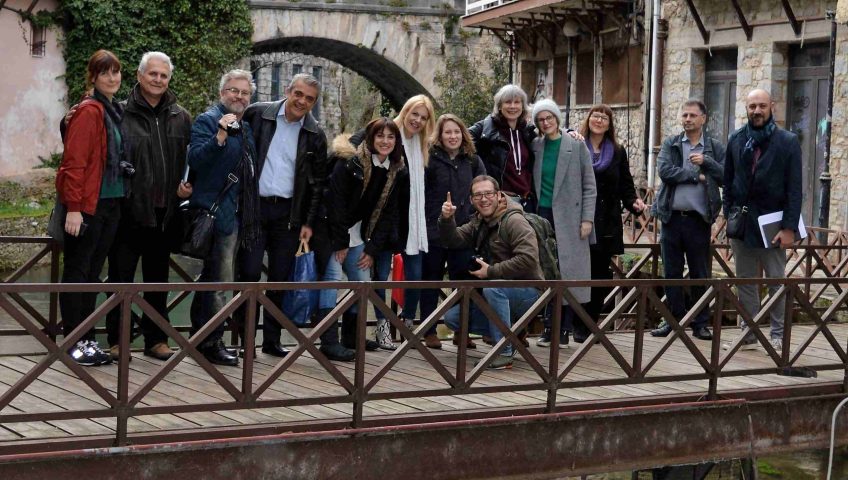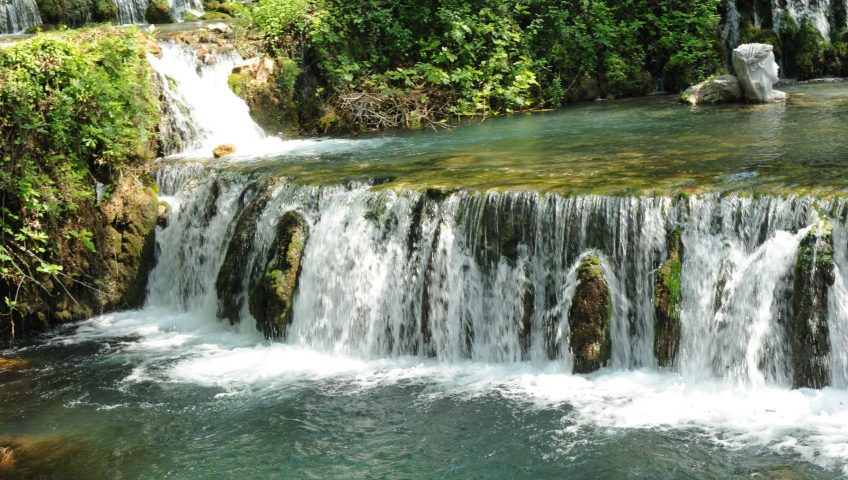Local development through culture
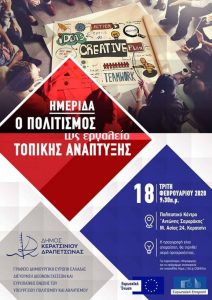
The Municipality of Levadia participated in a meeting held in Athens, February 18th 2020, organized by the Hellenic Creative Europe Bureau and the Municipality of Keratsini – Drapetsona. The participated speakers at the meeting focused on the pivotal role of culture for local develpment.
The director of Culture, Sports & Tourism Department of the Municipality of Levadia, Mr Andreas Stamatakis participated at the above metioned meeting and he presented to the audience the aim of the programme “Memory of Water”, the objectives, the participating cities and the results of the two artists’ residencies in Levadia.
The audience was facinated from the programme “Memory of Water” and many participants expressed their desire to be further informed by Mr. A. Stamatakis for the benefits of the Levadia from its participation to the progrmme
The river as a place to remember, and a place to forget

CAPTION: The Greek myth of the Oracle of Trophonius, and its relationship with the nexus of the River Erkyna, was a key inspiration for visioning work in Levadia.
I was incredibly inspired by the stories of the River Erkyna when I came to Levadia for the first time during the research residency in January 2019. I came away thinking that the river was a kind of spine for the town, historically providing everything from laundry facilities and rubbish takeaway, to an important place for ritual. The river was a place to remember and a place to let go – echoing the myth of the Oracle of Trophonius (see image above), which like many ancient Greek oracles was built at the nexus of two springs. I began asking about stories or rituals involving the river, from everyday encounters to symbolic and important lifetime events like baptism. Read more
Sun in an empty room 2
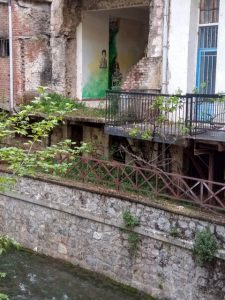
“The Sun in the Empty Room” is a reflection on the work of IwonaZającin the abandoned home of “Zoza and LoukasPapanikolaou”.”In contrast to Edward Hopper’s homonym painting, where the sun enters the room of an empty house as a ‘vanquisher’, in IwonaZając’s work, it enters the empty room of a ramshackle house and the light recomposes the shattered memory of the people who once lived there. The mural depicts the portraits of Zoza and her father, Loukas, with respect, love and discretion. They return the gaze of onlookers across the River Erkynas. The bond created is one that crosses time to link people, river and place in a reification of memory.
“The work is a moment that encloses the whole of time; the movement; the faith in people; and their vivid remembrance. It is a modern monument to the Papanikolaou family and for all the residents of the riverside neighbourhood – past and present. It crystallises, too, the essence of “The Memory of Water”project. It is a further encouragement, a motivation to search, find and re-establish the continuum of the people who lived, laboured, have passed through joys and sorrows there. It also gives a public voice in art to those who lackedone in life.
“The portraits of Zoza and Loukas in their home can only be glimpsed at one point along the river bank. It is an intentional choice intended to imply the privacy and embrace of the family home. The composition is only complete when the viewer catches a glance of the portraits from the riverside path.
“IwonaZając’s work is an exemplary conflation of ethics with aesthetics. She honours the people who inspired her and at the same time she provides us with strong feelings and intense sensations, along with rich stimuli for thought.”
VassiasTsokopoulos
Documenting and filming in Levadia
The Swedish artist and film-maker Jonas Myrstrand participate at the ArtCafe with a screening of his music documentary The Singing Raven (60 mins).
He did a “Spring Race” on the Erkyna river with some children and filmed it to make “A good Memory of Water”. Jonas also documenting and filming the hole process, actions and interactions of all the artists to trace the learning and impacts of Memory of Water in all the partner cities. Read More
Preparing for Levadia Revisited
Our six artists from six European post-industrial cities are preparing to embark on the second of their six residencies, this one in Levadia, Greece. I am so excited to know what the artists are thinking and have glimpses of what might be, like glittering reflections on the water. Siegfried from Ostend who works with spray paint, is identifying some young people who make graffiti art in the city. Will they work on one particular wall in one particular space to create work together? Will they work on their own work and also help the artist create a new mural for the city?Read More
Sun in an Empty Room
To get to the first meeting with the activists and inhabitants of Levadia at Nerotrivi, we took the road along the Erkyna river. My attention was drawn to the empty houses with no front walls. They invited me inside without hiding anything.
From the other side of the road, they were perfect imitations of ordinary houses. With windows, doors, a balcony and a house number. No sign of their shameless denudation.Read More
Myths & legends
The River Erkyna runs continuously through the city of Levadia. So many impressions, warm welcomes, and pictures … The camera fills with faces, meetings and conversations. Only now with a little distance and on a closer look at the pictures and clips, I realise the heavy stream of influence the river has here in Levadia. This stimulates our creative challenge and we are in the middle of the flow! The ideas begin to take shape, collaborations wake up, exchanges with the locals are investigated and begin to take form. There is so much to do – while the Erkyna continues to flow.
We also met a living legend, the sculptor, poet, actor, and philosopher Spyros Gourgiotis who recounted the myth of the river. Spyros made the statue of Erkyna looking up over the surface in the middle of the river. The model was his own daughter and he showed us a drawing in his studio where a school class had drawn pictures of the sculpture and wrote under that: “The Myth of Erkyna is Spyros’ daughter…” That’s the way to relate and mix all of our impressions of myths and reality, cultural heritage and local groups, in the spring flood.
– Jonas Myrstrand (Sweden)
The perfect wall
After lunch break, we hooked up with the local graffiti crew at Levadia. Always exciting meeting artists with the same passion, spray paint that is. And amazing how we connected straight away; I guess that when graffiti runs through your veins, it’s like a universal language when you meet other “writers” (graffiti artists). With the sun at its highest point we left for our city stroll. For me especially, the hunt for a canvas/wall was on. And there are plenty of great walls in Levadia! The potential for Street Art productions in this compact city is incredible. Lots of huge “blind” walls and all in perfect smooth concrete… “WALLhalla”!
Unfortunately tagging seems popular among Levadian kids. It’s almost everywhere. Sure I’ve got nothing against a well designed, aesthetic tag but mostly this wasn’t the case. Our group discussed this issue while we continued our exploration. “One way to counter illegal tagging is to provide a legal graffiti wall or space,” I suggested. A place where graffiti painters can practise their skills without the fear of being caught, this can result in higher level of artistry and mostly results in outgrowing the phase of simple tagging. It’s a “fight-fire-with-fire” concept, so to speak. Of course the locals were all in favour. Legal graffiti walls are mostly combined or near a local skatepark. Since the two sub-cultures are intertwined. We crossed the street… and there it was… a huge wall, in plain sight, near the riverbank, just outside the old city centre. This concrete surface was just screaming to be painted… I knew I had found… the perfect wall!
– Siegfried Vynck (Belgium)
The River Erkyna
It was a whirlwind introduction to Levadia and some of its citizens. A generous welcome awaited us led by the mayor showing us the tradition of Xenia – Greek hospitality at its finest! The week was spent meeting people, all of whom have had an impact on, or been impacted by the landscape, culture, history and traditions of Levadia and the Erkyna River in particular.
The river flows from high in the mountains, fed by multiple springs as it reaches the town. It then passes through old mills, man-made falls, locks, and under bridges until it relaxes into its natural pathway at the other side of town, gently flowing through an unfinished and unnamed public park. This unnamed park, sitting beside a giant unfinished government building and shows a town at a standstill. But the river is in constant flow, always squeezing through the barriers put in place by industrious humans over the centuries. Erkyna was there before the people of Levadia. It inspired myths and legends. How can we bring this powerful history back to life? How do we infuse the citizens of Levadia, through contemporary art, with the energy and power of the beautiful yet unstoppable Erkyna?
– Mary Conroy (Ireland)
The bulldozer
During his presentation on The Industrial Zone of Erkyna, local historian Vassias Tsokopoulos proposed the biggest threat to cultural heritage in Levadia is the bulldozer. Many former factories have been demolished or are falling into dereliction while some buildings have been preserved for cultural purposes. He also discussed intangible heritage giving the example of our base camp for the residency which was a former cotton ginning factory, a flour mill, and the public laundry, all powered by the energy of the river. Only some of these industrial functions are visible today, as the basement space has been converted into the Historical Ethnological Museum and the ground floor will soon host a permanent exhibition dedicated to local painter Theodoros Lazaris (1882-1978).
Vassias raised many interesting questions about the complex nature of memory. What should be kept and what should be demolished? As the city develops regeneration plans, does the conversion of the industrial zone into a touristic product constitute memory loss? Would the mere preservation of such buildings also cause a kind of memory loss? In the end, what will we know and remember about the names, faces, and indeed lives of the people who worked in these factories?
– Mary Conlon (Ireland)
Blind dates
It was our pleasure to go on nine blind dates during our first day in Levadia! This was a fun way, proposed by artist and curator Rafika Chawishe, for the artists and local community groups to break the ice. Not only did we meet citizens from all walks of life through this process but we learned that some of the groups had taken the theme Memory of Water and applied it to their own activities before our arrival. This was a special surprise for the artists who heard from clients of EPAPSY and EKEPSYE (two organisations providing mental health supports) about the healing power of the river and what emotions the river conjured for them.
Later that evening we had another blind date – this time in three languages! – when we were invited to a tea party by newcomer citizens. KEDHL is a municipal organisation which provides an organic integration programme for refugees and asylum seekers. Newcomer citizens are welcomed by the Mayor on arrival, told they are safe and welcome, and hosted in apartments in the city. These families generously opened their homes to us and gave us advice on what to see and do in Levadia.
– Mary Conlon (Ireland)
On the banks of the River Erkyna
The Memory of Water Residency Programme consists of two international visits in three cities: Levadia, Gdansk and Govan. The first visit is focussed on understanding the local context by meeting and learning from communities, field experts and stakeholders. The second visit is focussed on artistic production when the artists will deliver planned actions and interventions in partnership with their hosts. Our first research residency took place in January with the Municipality of Levadia and our base camp was the former public laundry on the banks of the River Erkyna in what was once the industrial zone of the city.
In developing the programme for the first research residency, we took into consideration a number of important factors. Of course, we began with our core research question: What’s next for post-industrial waterfront heritage zones in European cities? Then, we discussed our three residency themes: (1) memory and heritage; (2) access and inclusivity; and (3) environmental responsibilities and impacts. This was followed by specific requests from the artists. We have invited the artists to share with us here their reflections on each visit so that we may trace the similarities and differences between each of the partner cities.
Artists’ Residency #1 in Levadia
Between 29 January and 2 February, the first of three artist residencies will be held in Levadia, Greece. Memory of Water partners from Sweden, Scotland, Poland, Belgium and Ireland will be hosted by their Greek counterparts to exchange and generate creative approaches to post-industrial waterfront sites.
Over the five days, there will be an intensive, diverse programme of presentations, discussions, site visits, workshops and interactions with various institutions and local bodies. The findings from Memory of Water will reach out locally, nationally and internationally, exploring and challenging histories and futures of industry and waterfronts through artist and community-led discussions.
